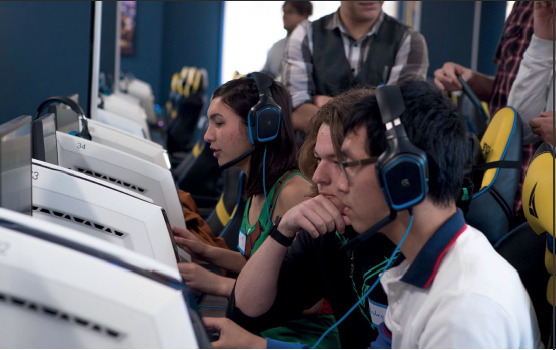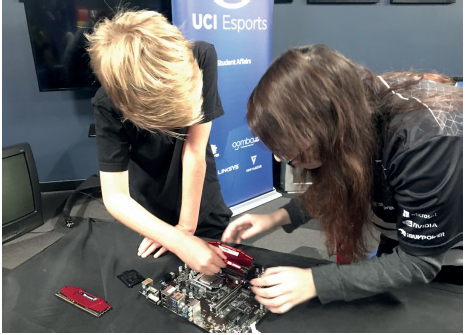
In the last five years, competitive videogame play or ‘esports’ has quickly emerged as one of the fastest growing spectator and participatory sports for young people on a global scale. According to Forbes, 2018 global revenues are predicted to hit the one billion mark, a 38 per cent increase from 2017 (Perez, 2018). In North America, there are now more than 50 universities and colleges with varsity esports teams, many of which now offer scholarships for their top players. And this rise of interest in esports at the collegiate level is mirrored by the rise of interest at the high school level as well, with more than a dozen youth esports leagues emerging in the last three years in the United States alone.
To date, esports programs for high schools have largely remained in the after-school and for-profit sector, consisting of competing teams of high schoolers who play commercial videogame titles on teams and against one another in either school-versus-school matches or structured league playoff events. Such programs are permitted by the schools, but take place out-of-classroom and offsite, leveraging students’ interest in esports as a means to organise and connect socially, but not as a means for teaching and learning or for more targeted development of career-oriented or social-emotional skills. Such programs attempt to create a positive competitive environment for young adults that might foster healthy attitudes toward school and productive connections with their peers. However, to date no programs have designed the league with learning in mind or assessed whether or not such programs are actually making good on their potential to connect and enrich the intellectual and social lives of kids.

The North America Scholastic Esports Federation (NASEF) takes a very different approach, using esports as a Trojan horse for connected learning (Ito et al, 2013) – learning that connects students’ personal interests with academic, career, and civic achievement as well as with a network of mentors and peers that can support and amplify that learning and build relationships between young people and the broader community as a means for affiliation, recognition, and opportunity. Launched in 2017 in California and now expanded across North America (United States, Canada and Mexico), NASEF league and club structure directly connects academic content to esports in authentic ways to enrich students’ gameplay and to demonstrate to young learners how school content across the disciplines is directly and crucially relevant to our everyday lives. Our fundamental premise, based on more than two decades of research, is that “the most resilient, adaptive, and effective learning involves individual interest as well as social support to overcome adversity and provide recognition” (Ito et al., 2013). NASEF makes good on this principle using the meteoric rise of esports.
NASEF Goals
The stated mission of NASEF is “to provide opportunities for all students to use esports as a platform to acquire critical communication, collaboration, and problem-solving skills needed to thrive in work and in life.” (About the Federation, 2018). This grant mission includes both academic content goals and equity goals.
Academic Content Goals. Unlike any other high school esports league to date, NASEF puts learning at the very heart of the entire enterprise. Here, esports is seen as a vehicle for engaging students’ learning across the academic domains of Science, Math, and English Language Arts (ELA) (see Figure 1) as well as career-ready practices in game design, entrepreneurship, marketing and hospitality (Career Technical Education standards or CTE, 2018) and social-emotional skills (CASEL, 2018). This cross-disciplinary laundry list of standards may seem ambitious from the perspective of the standardised classroom, but in practice the content standards across domains readily hang together out ‘in the wild’ of everyday work and play. Esports is no exception, and success in esports at the team and club level requires a broad set of knowledge, skills and dispositions that traverse a single discipline.